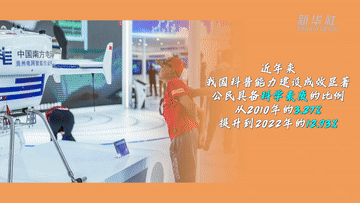Outlook · Chronicles of Governance | Collaborative Development Highlights New Responsibility Development | Beijing Tianjin Hebei | Chronicles
He affirmed the achievements of Hebei's economic and social development since the 19th National Congress of the Communist Party of China. He hoped that Hebei would comprehensively study and implement the spirit of the 20th National Congress of the Communist Party of China, fully, accurately and comprehensively implement the new development concept, firmly grasp the primary task of high-quality development and the strategic task of building a new development pattern, break new paths in promoting innovation driven development, highlight new responsibilities in promoting the coordinated development of Beijing, Tianjin and Hebei and the construction of Xiong'an New Area with high standards and quality, achieve new breakthroughs in promoting comprehensive green transformation, cultivate new advantages in promoting reform and opening up, show new achievements in promoting common prosperity, accelerate the construction of an economically strong and beautiful Hebei, and strive to write a chapter of Chinese path to modernization.
To deepen the coordinated development of Beijing Tianjin Hebei, the key is to firmly grasp and alleviate the "bull nose" of Beijing's non capital functions. The three regions of Beijing, Tianjin, and Hebei adhere to the dual approach of internal functional restructuring and external relocation, focusing on the external relocation of landmark projects. Hebei has created a number of landmark engineering projects to undertake the relocation of non capital functions in Beijing, continuously improving the incentive and constraint policy system for relocation, and helping Beijing achieve "slimming down and physical fitness".
Integrated transportation is the skeletal system and leading field of collaborative development. Over the past nine years, the Beijing Tianjin Hebei region has opened up major arteries, unblocked microcirculation, and expanded 42 sections and 2540 kilometers of "connecting roads". The Beijing Zhangjiakou high-speed railway, Beijing Xiong intercity railway, and Beijing Tang intercity railway have been put into operation, forming the main framework of the "Beijing Tianjin Hebei" railway. Nine high-speed highways, including Beijing Kunming, Beijing Taiwan, and Beijing Qin, have been successively built, creating an economic corridor connecting Hebei with Beijing and Tianjin from different directions.
Beijing and Tianjin have a large number of first-class universities and high-end research talents, with a solid innovation foundation and strong strength. In recent years, Hebei has focused on strengthening collaborative innovation and industrial cooperation in the Beijing Tianjin Hebei region, playing a demonstrative and driving role in achieving high-level technological self-reliance and self-improvement.
The co construction and sharing of public services is an effective support for promoting the coordinated development of Beijing Tianjin Hebei. For over 9 years, the Beijing Tianjin Hebei region has continuously deepened the co construction and sharing of public services in areas such as education, healthcare, elderly care, and ecology, effectively enhancing people's sense of gain, happiness, and security.
(Li Fengshuang, Shi Xiangzhou, Zhang Tao, Qi Lei Jie, Zhang Kangzhe, reporter from Outlook Newsweek)
The coordinated development strategy of Beijing Tianjin Hebei is the first national regional development strategy in China since the 18th National Congress of the Communist Party of China.
In February 2014, Xi Jinping, general secretary of the CPC Central Committee, president and chairman of the Central military Commission, presided over a forum in Beijing to listen to the report on the coordinated development of Beijing, Tianjin and Hebei, emphasizing the realization of the coordinated development of Beijing, Tianjin and Hebei. It is the need to build a new capital economic circle for the future and to promote the innovation of regional development systems and mechanisms. It is also the need to explore and improve the layout and shape of urban agglomeration and to provide demonstrations and models for optimizing the development of regional development. It is the need of exploring the effective path of the construction of ecological civilization and promoting the coordination of population, economic resources and environment, the need of realizing the complementary advantages of Beijing, Tianjin and Hebei, promoting the development of the economic zone around the Bohai Sea, and promoting the development of the northern hinterland, and is a major national strategy. we should adhere to complementary advantages, mutual benefit and win-win results, and promote in a down-to-earth manner, and speed up a path of scientific and sustainable coordinated development.
Over the past nine years and more, General Secretary Xi Jinping has successively presided over three symposiums, personally planning, arranging, and personally promoting the coordinated development of Beijing, Tianjin and Hebei, pointing out the way forward, providing fundamental compliance, and promoting the continuous in-depth promotion of this national strategy.
Throughout the top-level design of the Beijing Tianjin Hebei Collaborative Development Plan, the core of the strategy is to orderly alleviate non capital functions in Beijing, adjust economic and spatial structures, find a new path of intensive development, explore a model for optimizing development in densely populated areas, promote regional coordinated development, and form new growth poles.
By implementing relevant plans, the Beijing Tianjin Hebei region has firmly grasped the "bull's nose" of Beijing's non capital functions, consciously broken the mindset of "one acre, three parts", and achieved initial results in relieving Beijing's non capital functions. The construction of Xiong'an New Area has achieved significant phased results, the high-quality development of Beijing's urban sub center has accelerated, and the "Beijing Tianjin Hebei on the track" has accelerated its formation. The beautiful and livable Beijing Tianjin Hebei region has achieved fruitful results, and the level of scientific and technological innovation and industrial integration development continues to improve
He affirmed the achievements of Hebei's economic and social development since the 19th National Congress of the Communist Party of China. He hoped that Hebei would comprehensively study and implement the spirit of the 20th National Congress of the Communist Party of China, fully, accurately and comprehensively implement the new development concept, firmly grasp the primary task of high-quality development and the strategic task of building a new development pattern, break new paths in promoting innovation driven development, highlight new responsibilities in promoting the coordinated development of Beijing, Tianjin and Hebei and the construction of Xiong'an New Area with high standards and quality, achieve new breakthroughs in promoting comprehensive green transformation, cultivate new advantages in promoting reform and opening up, show new achievements in promoting common prosperity, accelerate the construction of an economically strong and beautiful Hebei, and strive to write a chapter of Chinese path to modernization.
Surrounding Beijing and Tianjin, Hebei has identified the positioning coordinates in the overall situation of coordination, seized major opportunities, fully implemented the functional positioning of "three zones and one base", built a series of key undertaking platforms based on its own comparative advantages, made efforts to open up the economic corridor between Beijing and Tianjin in key regions, enhanced the endogenous power of economic development in promoting collaborative innovation and industrial cooperation, continued to deepen public service co construction and sharing for the benefit of the people, continued to promote the depth and breadth of collaborative development, and worked hard to promote Chinese path to modernization to show a beautiful picture in Hebei.
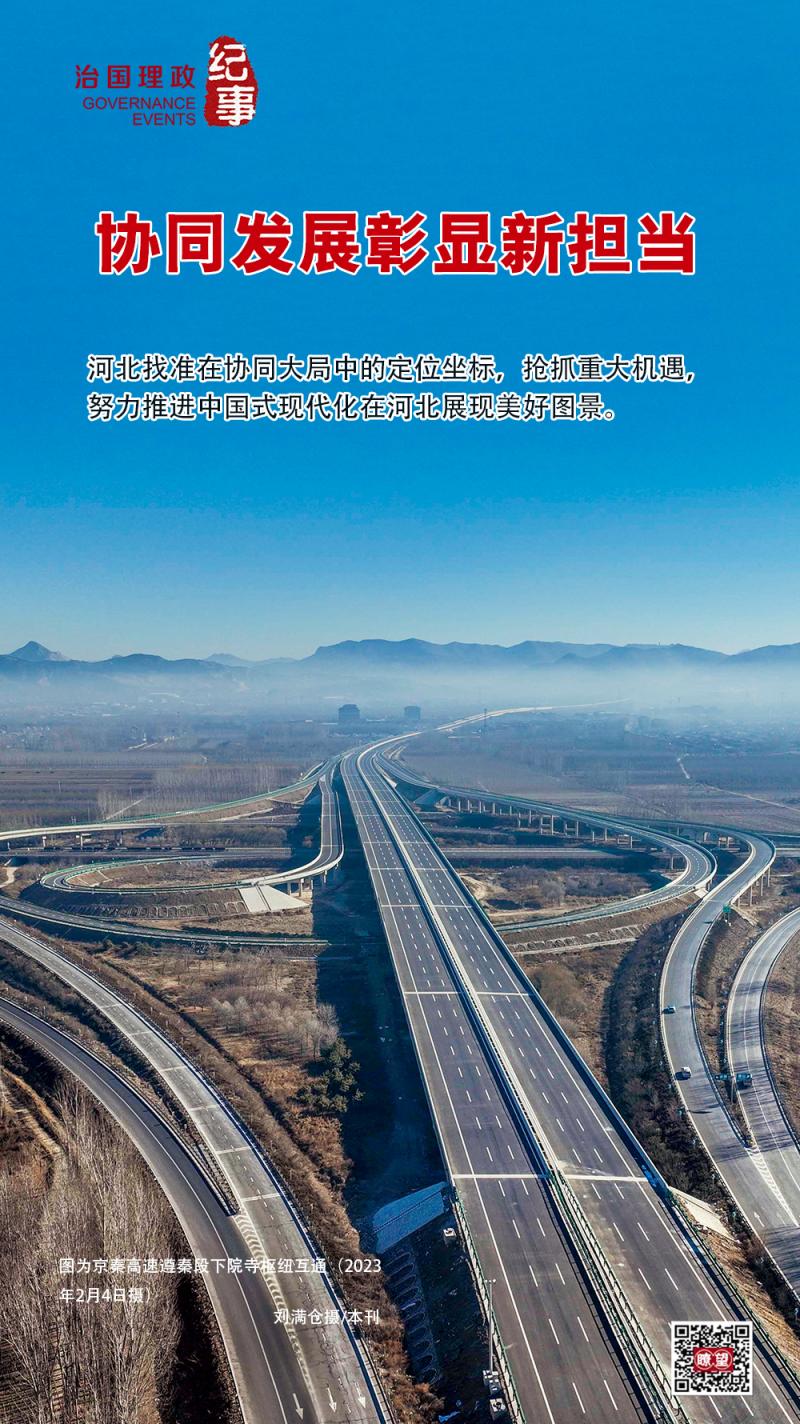
Firmly grasp and alleviate the "bull nose" of Beijing's non capital functions
Ships stop at the container terminal of Huanghua Port Comprehensive Port Area in Hebei Province for unloading operations. Photo by Luo Xuefeng/This magazine
The key to deepening the coordinated development of the Beijing Tianjin Hebei region is to firmly grasp and alleviate the "bull nose" of Beijing's non capital functions. The three regions of Beijing, Tianjin, and Hebei adhere to the dual approach of internal functional restructuring and external relocation, focusing on the external relocation of landmark projects. Hebei has created a number of landmark engineering projects to undertake the relocation of non capital functions in Beijing, continuously improving the incentive and constraint policy system for relocation, and helping Beijing achieve "slimming down and physical fitness".
Internal functional restructuring and external relocation are two key measures. Relief requires close coordination between Beijing and Hebei to form a joint force. Beijing takes solving the "big city disease" as its focus and starting point, strengthens internal adjustment, controls increment and sparse stock, and optimizes core functions. Hebei has established a "1+5+4+33" key undertaking platform system, with Xiong'an New Area as the core carrier, 5 collaborative platforms as the focus, 4 characteristic professional platforms, and 33 personalized platforms as support, continuously improving its comprehensive carrying capacity. The province has undertaken a total of 43900 units transferred from Beijing to Tianjin, which is not only a geographical migration but also a reshaping of productivity.
The original intention of establishing Xiong'an New Area is to create a concentrated carrier of non capital functions in Beijing. Starting from 2021, with a focus on universities, hospitals, and central enterprise headquarters under the Beijing Ministry, we will promote the relocation of non capital functions to Xiong'an New Area in stages and batches.
Create a group of landmark engineering projects to undertake the relocation of non capital functions in Beijing. The three provinces and cities of Beijing, Tianjin, and Hebei have actively strengthened their coordination, formulated specific implementation measures for landmark engineering projects that do not serve as capital functions, clarified annual key tasks, timelines, and roadmaps, established approval "green channels" in accordance with laws and regulations, and played a demonstrative and driving role.
Since its establishment six years ago, Xiong'an New Area has been striving to build new functions, form a new image, develop new industries, gather new talents, and build new mechanisms, comprehensively enhancing its comprehensive carrying capacity, factor cohesion, and self-development ability. The first batch of iconic relief projects have been orderly implemented.
In the enterprise headquarters area of the start-up zone of Xiong'an New Area, the reporter saw that the construction of China National Chemical Corporation's headquarters base has entered the construction of the main structure above ground level, with dozens of steel structure columns rising high and octagonal shapes showing the initial outline. This building adopts the design concept of "Golden Reed" in Baiyangdian, symbolizing endless growth and prosperity.
As of now, the first batch of four central enterprises have settled and built their headquarters in Xiong'an New Area, and four universities and two hospitals under the Ministry have determined their locations. Relevant work is actively being promoted. Central enterprises have established over 150 various institutions in Xiong'an New Area, with over 3000 registered enterprises in Beijing as the source of investment. According to the requirements of the central government, we will continue to plan the transfer of financial institutions, research institutes, and public institutions for the second batch of central enterprises in Beijing, as well as their second and third level subsidiaries or innovative business sectors that will be launched for relocation.
Hebei takes advantage of Beijing's efforts to promote regional wholesale markets and logistics centers, and accelerates the construction of an important modern commercial and logistics base in the country.
"In the past, I worked as a clothing agency wholesale in Beijing. After arriving in Gu'an, my store area expanded threefold, sales increased by more than 20%, and the market expanded from the North China region to various parts of the country," said Han Jinying, a merchant who settled in Yongding City · Beijing Tianjin Hebei International Trade City.
As a landmark project for Gu'an to undertake the relocation of non capital functions in Beijing, the commercial city opened in August 2022. It not only accepts more than 4000 clothing industry merchants from Beijing, but also attracts clothing and apparel source manufacturers from all over the country, driving the formation of a new industrial chain that integrates technology research and development, creative design, raw material procurement, and fashion release.
Improve the policy system for easing incentives and constraints. In terms of accelerating the construction of a policy system for the relocation of non capital functions in Beijing, on the one hand, Hebei implements an industrial access system, strictly adheres to industrial access standards, and formulates a negative list of industries that restrict the undertaking and layout; On the other hand, in policy formulation and implementation, it is important to identify the key concerns of the relief units and personnel, ensure that the overall benefits after relief are not lower than those of staying in Beijing, and stimulate the internal motivation of all parties to relief.
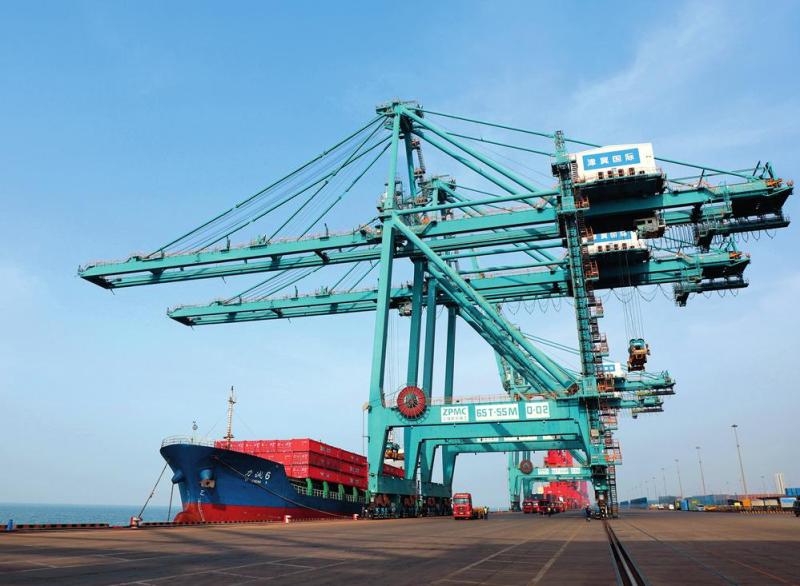
New fixed assets investment projects in Xiong'an New Area, newly established or relocated legal entities, industrial activity units, and self-employed businesses will all implement the positive list to ensure that the industrial development conforms to the industrial orientation of the New Area, meets the requirements of Beijing's non capital function relief, develops high-end high-tech industries, and ensures that the industrial management and control of the New Area is scientific and orderly. Xiong'an will also update the positive list based on the planning outline and actual construction and development of the new area.
A few days later, the staff of Baoye Construction Technology Co., Ltd. obtained a business license registered as Baoye Construction Technology Co., Ltd. in Beijing, including online submission of relocation applications, mutual checking of electronic file information, and self-service printing of business licenses. "We are a subsidiary of a state-owned enterprise that migrated from Beijing to Xiong'an New Area. At the end of last year, we were in Beijing and applied for the migration service online, eliminating the hassle of submitting materials and mailing paper files back and forth between Beijing and Xiong'an. We feel that the efficiency of handling affairs in the new area is very high," said Shi Shujun of Baoye Construction Technology Co., Ltd.
It is understood that Xiong'an New Area was the first in the country to launch the full process online migration system for enterprises across provinces in July 2022. As of now, more than 30 enterprises have processed migration services through this system.
Ding Jinjun, Deputy Director of the Reform and Development Bureau of Xiong'an New Area, introduced that in order to promote the implementation of key relief projects, Xiong'an New Area has established a leadership group for relief work led by the main leaders of the Party Working Committee and Management Committee. It has set up three special teams to undertake relief work for universities, hospitals, and enterprise headquarters, and established project implementation coordination teams one by one. The service mechanism of "one project, one team, one set of plans, one follow-up" is adopted to coordinate and solve various problems encountered during the project implementation process. Currently, the focus of work in Xiong'an New Area has shifted towards high-quality construction, high-level management, and high-quality development.
Xiong'an New Area is a microcosm of Hebei's undertaking of Beijing's non capital functional relocation. Various regions in Hebei, especially those surrounding Beijing and Tianjin, fully leverage their geographical advantages, deepen the reform of "streamlining administration, delegating powers, and improving services", optimize the business environment, introduce a series of preferential policies, and actively attract relief projects to land, develop, and upgrade in Hebei.
Building an economic corridor connecting Beijing and Tianjin from different directions
Integrated transportation is the backbone system and leading field of collaborative development. Over the past nine years, the Beijing Tianjin Hebei region has opened up major arteries, unblocked microcirculation, and expanded 42 sections and 2540 kilometers of "connecting roads". The Beijing Zhangjiakou high-speed railway, Beijing Xiong intercity railway, and Beijing Tang intercity railway have been put into operation, forming the main framework of the "Beijing Tianjin Hebei" railway. Nine high-speed highways, including Beijing Kunming, Beijing Taiwan, and Beijing Qin, have been successively built, creating an economic corridor connecting Hebei with Beijing and Tianjin from different directions.
Build the "one hour economic circle" in the Beijing Tianjin Hebei region. With the opening and operation of the Beijing Xiong'an intercity railway connecting Beijing and Xiong'an New Area, the layout of the Beijing Tianjin Hebei regional railway network has been further improved, and the regional "one hour economic circle" has gradually formed.
Xiong'an Station is the first major infrastructure project under construction in Xiong'an New Area. Nowadays, there are 14 pairs of intercity trains traveling between Beijing and Xiong'an every day. Starting from Beijing West Station, it takes 50 minutes to reach Xiong'an New Area. Surrounding Xiong'an Station, there are towering tower cranes for projects such as China Communications Future Science and Technology Innovation City, revealing the embryonic form of the integrated development of station city and industry city in the Zangang area where Xiong'an Station is located.
At the Xiong'an Smart Transportation International Forum and the China Communications Future Science and Technology Innovation City Industry Development Conference held in March this year, 86 innovative enterprises covering multiple sectors such as digital technology, network communication, high-end equipment manufacturing, and new energy development signed contracts on site. This is the largest innovative industrial cluster signing since the establishment of Xiong'an New Area. The Zangang area, with a focus on CCCC Future Science and Technology Innovation City, is striving to become a high-end high-tech industry cluster, allowing visitors from all walks of life who take the high-speed rail to Xiong'an to experience the modern new atmosphere as soon as they get off the train.
In the hinterland of Beijing Tianjin Hebei, the "Tongwu Corridor" that can be accessed within an hour has always been regarded as a bridgehead and experimental field for coordinated development. At the end of 2022, the science and technology departments of Tongzhou in Beijing, Wuqing in Tianjin, and Langfang in Hebei signed a memorandum of cooperation to jointly build innovation and entrepreneurship platforms. 80 key laboratories, engineering technology centers, and innovation platform carriers such as maker spaces were included in the shared and shared directory in the three regions. At present, more than 90% of technology-based enterprises in Langfang City, Hebei Province have established close cooperative relationships with Beijing Tianjin research institutes and higher education institutions.
Build an integrated high-quality development demonstration zone. Langfang North Three Counties actively integrate into the overall coordinated development of the Beijing Tianjin Hebei region, in accordance with unified planning, unified policies, unified standards, and unified control requirements, actively connect with services, strengthen practical cooperation, and continuously develop themselves in the process of promoting high-quality integrated development with Tongzhou District in Beijing.
Chaobai River is the boundary river between Sanhe, Dachang, and Xianghe counties and cities in Hebei Province, and Tongzhou District in Beijing. On both sides of a river, people have always been close to each other, but there is also a feeling of being far away. In March 2020, the National Development and Reform Commission, Beijing Municipality, and Hebei Province jointly issued the "Collaborative Development Plan for Tongzhou District of Beijing and Sanhe, Dachang, and Xianghe Counties and Cities in Hebei Province", proposing to fully leverage the demonstrative and leading role of Beijing's urban sub center, and radiate and drive the coordinated development of the three northern counties. In August 2021, the State Council issued the "Opinions on Supporting the High quality Development of Beijing's Urban Sub center", which clearly stated the need to accelerate the construction of the Tongzhou District and the North Three Counties Integrated High quality Development Demonstration Zone.
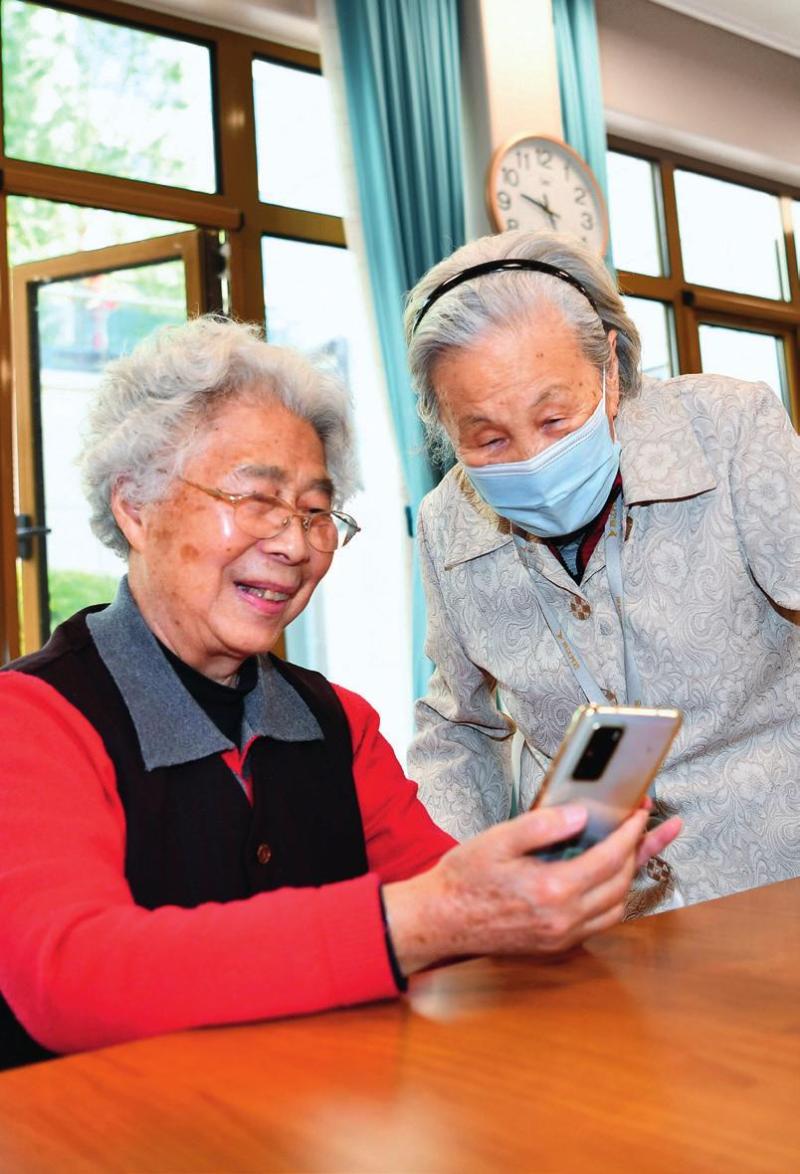
In March of this year, Liantai Cluster Computing Technology Co., Ltd.'s first intelligent manufacturing equipment was put into production and offline in the Yanjiao area of Sanhe. Xu Wei, Manufacturing Director of Liantai Cluster Technology Co., Ltd., introduced that as a small and innovative "little giant" enterprise in Beijing, with the rapid development of business, it is necessary to select and expand new research and development centers and production bases. The Yanjiao area adjacent to Tongzhou in Beijing has become the first choice.
Zhang Gui, Director of the Collaborative Development Office of the North Three Counties in Langfang City, said that in promoting the process of industrial integration, the North Three Counties and Tongzhou District have achieved deep integration of industrial chain, supply chain, and innovation chain. As of now, Beisan County has 35 provincial-level or above research and development platforms, cultivating and introducing 319 high-tech enterprises and 2973 technology-based small and medium-sized enterprises. The three counties in the north and Beijing have jointly held project promotion and negotiation conferences for four consecutive years, with a total of more than 160 signed projects and cooperation matters, and a total investment of 108 billion yuan.
Co construction and collaborative development demonstration zone. Focusing on industrial chain collaboration, Tangshan, Hebei Province continues to enhance the carrying capacity of the Tianjin Hebei Collaborative Development Demonstration Zone, promoting deep cooperation in the Beijing Tianjin Hebei industrial chain.
In the refrigeration equipment industrial park located in Linjin Industrial Park, Hangu Management District, Tangshan City, a batch of ceiling style air coolers produced by Yatong Refrigeration Equipment Co., Ltd. have been installed and will be used in a low-temperature cold storage for a smart cold chain project in Tianjin Binhai New Area. The company relocated from Tianjin, only a few hundred meters away from the highway exit, and is close to Tangshan Port and Tianjin Port, making it convenient to ship to the whole country and even the world.
Linjin Industrial Park is an enclave embedded in Tianjin Binhai New Area in Hebei Province. The Hangu Management Zone focuses on industrial positioning and plans a refrigeration equipment industrial park covering an area of 350 acres. Currently, multiple projects have been introduced. A competitive refrigeration industry cluster is flourishing in this enclave.
The Lutai Economic Development Zone in Tangshan City, with its geographical advantage of being adjacent to Tianjin and having a port along the coast, actively attracts industrial transfer projects in Tianjin. Currently, it has formed three traditional industries of bicycle parts, modern home furnishings, and intelligent heating equipment, as well as two emerging industry clusters of high-end equipment manufacturing and prefabricated construction.
Construct an economic belt along the railway line. A high-speed railway line builds the "connecting heart bridge" between Beijing and Zhangjiakou. Zhangjiakou quickly integrates into the "one hour transportation circle" of the capital through the Beijing Zhangjiakou high-speed railway as a link. The high-speed railway drives the rapid flow of technology, capital, and talent, becoming a new engine that ignites the relaxation of non capital functions in Beijing and the green and high-quality development of Zhangjiakou.
In March 2017, Qinhuai Data Group, headquartered in Beijing, laid out a big data industry base in Huailai County, Zhangjiakou City. Afterwards, more than 60 digital economy enterprises settled in Huailai and operated over 600000 servers.
Ma Guoce, Director of Government Affairs of Hebei Qinhuai Data Co., Ltd., said that the group will expand its industrial layout along the Beijing Zhangjiakou high-speed railway, from Huailai County, which borders Beijing, to Xuanhua District, Chongli District, and Bashang District along the high-speed railway.
Zhang Zuoyu, Deputy Director of Zhangjiakou Development and Reform Commission, introduced that the development positioning of Zhangjiakou is becoming increasingly clear, with six green industries including sports, culture and tourism, ice and snow, big data, renewable energy, modern manufacturing, and green agriculture and animal husbandry accounting for nearly 50% of GDP.
Breaking new paths in promoting innovation driven development
Beijing and Tianjin have a large number of first-class universities and high-end research talents, with a solid innovation foundation and strong strength. In recent years, Hebei has focused on strengthening collaborative innovation and industrial cooperation in the Beijing Tianjin Hebei region, playing a demonstrative and driving role in achieving high-level technological self-reliance and self-improvement.
Starting from Beijing West Station, heading south, Zhuozhou, Gaobeidian, and Baoding, within a half-hour high-speed rail journey, stories of Beijing Tianjin R&D and Hebei transformation become more and more exciting.

"Beijing Tianjin R&D and Hebei Transformation" promote collaborative innovation. Hebei Province is based on the industrial division of labor layout in the Beijing Tianjin Hebei region, adhering to market leadership, government guidance, division of labor cooperation, and complementary advantages, continuously building a demonstration zone for industrial coordinated development.
Baoding Zhongguancun Innovation Center is the first innovation center established by Zhongguancun outside Beijing in China. Since 2015, it has focused on industries such as next-generation information technology, biopharmaceuticals, new energy, and smart grids, attracting 336 enterprises to settle in, with a cumulative R&D investment of over 100 million yuan, obtaining more than 1000 intellectual property rights, and attracting over 4000 entrepreneurial talents.
A ceramic plate with a thickness of only 0.5 millimeters and a length and width of 120 millimeters each can provide heat dissipation for a 400 watt LED light.
As the industrialization base of Peking University's wide bandgap semiconductor research center, Zhongchuang Yanyuan has grown rapidly since its settlement in Baoding Zhongguancun Innovation Center in May 2016, and has formed a collaborative development model of research and development in Beijing and transformation in Baoding.
In early March of this year, a hydrogen fuel hybrid articulated light rail vehicle was officially launched at the Beijing Car Intelligent Manufacturing Base in Mancheng District, Baoding City. As a new generation light rail train, this vehicle is independently developed by Beijing Rail Transit Technology and Equipment Group Co., Ltd. and manufactured at the Hebei Beijing Car Intelligent Manufacturing Base.
Zhang Xiaofeng, Director of the Development and Reform Commission of Baoding City, said that to undertake the relocation of non capital functions, it is not only necessary to move Beijing enterprises to Baoding, but more importantly, to build an innovative ecosystem with innovative vitality and endogenous driving force. As of the end of 2022, there were a total of 707 cooperation projects between Baoding and Beijing Tianjin, with a total investment of 683.3 billion yuan.
Tian Xuebin, Vice President of Hebei University of Economics and Trade and Executive Director of Hebei Province Collaborative Innovation Center for Beijing Tianjin Hebei Collaborative Development, said that strengthening the construction of the Beijing Tianjin Hebei Collaborative Innovation Community, attracting more Beijing Tianjin scientific and technological achievements to incubate and transform in Hebei, can better promote the deep integration of innovation chain, industrial chain, capital chain, and talent chain, and provide strong technological support for building a new growth pole in collaborative development.
Strengthen the position of enterprises as the main body of innovation. Hebei aims to meet the national strategic needs, seize the major opportunities of the new round of technological revolution and industrial transformation, increase incentives for enterprise innovation, implement a subsidy system for enterprise R&D investment, and provide subsidies of 10% of the annual new R&D investment of enterprises. The maximum annual subsidy for a single enterprise is 10 million yuan.
It is understood that Hebei has arranged 953 million yuan of financial funds this year to provide subsidies for 5356 technology enterprises after R&D investment. In addition, among the 229 Hebei Province Technology Invention Award and Science and Technology Progress Award winning projects in 2022, 144 were led or participated in by enterprises, accounting for 62.89% of the total.
In 2017, in response to the national strategy of coordinated development in the Beijing Tianjin Hebei region, Beijing Zhitong Precision Transmission Technology Co., Ltd. established Hebei Zhikun Precision Transmission Technology Co., Ltd. in the Shijiazhuang High tech Zone.
Nowadays, Zhikun Technology has made significant breakthroughs in the field of high-precision RV reducers, the core components of industrial robots. The core technology is independently controllable and the product performance is world leading, achieving the domestic substitution of high-precision RV reducers for Chinese industrial robots.
As a native of Beijing, the chairman of the company, Chen Shaolong, has spent at least 5 months in Shijiazhuang every year in recent years. From project construction to production, and then to production line expansion, he personally felt the thoughtful service of the local government. "The company will deeply establish itself in Shijiazhuang and build a digital intelligent manufacturing base and engineering technology research and development center with an annual output of 500000 high-precision reducers. After the project is put into operation, the annual output value will reach 2 billion yuan." Chen Shaolong said.
Hebei focuses on the urgent and difficult needs of enterprises in terms of technology, talent, and funding, classifies and cultivates, comprehensively implements policies, increases credit support for technology enterprises, organizes government bank linkage financial docking activities, establishes long-term work mechanisms such as technology finance training and science and technology innovation listing guidance, and collaborates with financial institutions to launch innovative credit products. In 2022, loans to technology enterprises exceeded 200 billion yuan.
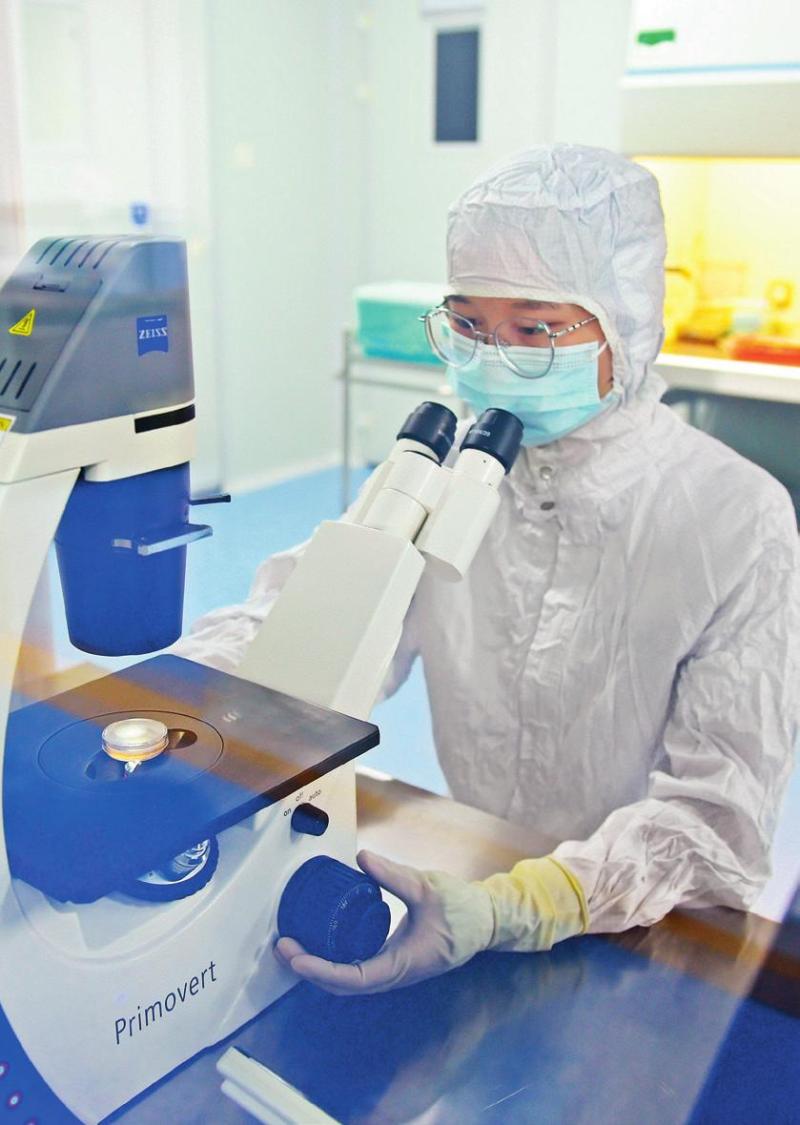
Since the beginning of this year, Hebei has established an average of over 1200 new enterprises every day. As of the end of the first quarter, Hebei had 8.0772 million operating entities, including 12000 high-tech enterprises and 64 technology leading enterprises.
Accelerate the promotion of public service co construction and sharing
The co construction and sharing of public services is an effective support for promoting the coordinated development of the Beijing Tianjin Hebei region. For over 9 years, the Beijing Tianjin Hebei region has continuously deepened the co construction and sharing of public services in areas such as education, healthcare, elderly care, and ecology, effectively enhancing people's sense of gain, happiness, and security.
Sharing basic education resources to enhance the education level in Hebei. Under the direction of promoting the sharing of high-quality basic education resources in primary and secondary schools in Beijing and Tianjin with Hebei Province, there have been over 500 basic education exchange projects between Beijing and Tianjin, and more than 1000 backbone principals and teachers from primary and secondary schools have gone to Beijing for on-the-job learning.
Since its establishment in 2016, the Caofeidian Branch of Beijing Jingshan School, located in Caofeidian District, Tangshan City, Hebei Province, has implemented classroom synchronization and resource sharing in accordance with the teaching management methods of the Beijing Jingshan School headquarters. Currently, it has a student population of 3000 and has become one of the famous basic education schools in the local area. Principal Fan Luyan said that the school has always adhered to the Jingshan model, Jingshan spirit, Jingshan philosophy, and Jingshan teaching and management methods, achieving synchronous classroom education with the school. They specially form a think tank to travel between the two schools year-round, provide subject guidance, and provide paired assistance between teachers and apprentices, so that the results of collaborative education development can benefit more children in Hebei.
Entering the Xiong'an Campus of Beijing No.4 Middle School, a brand new modern campus comes into view. This campus has a total construction area of approximately 42000 square meters and is the largest school in the "Three Schools" project supported by Beijing. In recent years, a total of 59 high-quality schools in the Beijing Tianjin Hebei region have established assistance cooperation with schools in Xiong'an New Area.
It is also understood that the Education Bureau of Shijiazhuang City is actively promoting collaborative cooperation in the field of basic education, and has launched over 30 key educational cooperation projects with Beijing and Tianjin. In addition, principals and backbone teachers were organized to study and train at universities in Beijing and Tianjin, with over 10000 trainees.
Patients

